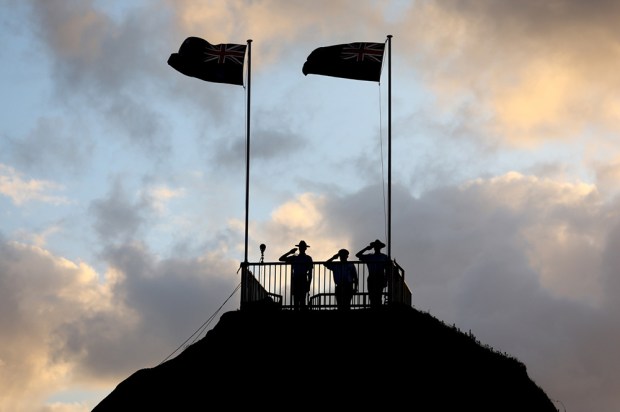As Islamic State jihadists slaughter and maim their way across two countries with sadistic efficiency, a new US-led Coalition of the Willing seeks to ‘degrade and ultimately destroy’ these Twitter-savvy barbarians. With everyone’s attention understandably focused on the black flags and head-severing prowess of IS, airstrikes also struck a different organisation in the Levant: Khorasan. Officials allege that this separate and little-known group was in the final stages of planning mass casualty attacks in the West.
Khorasan refers to an historical region, the far east of the Muslim world, encompassing parts of Iran, Turkmenistan, and Afghanistan. The assertion of US Director of National Intelligence James Clapper that this hitherto unknown group ‘pose as much of a danger as the Islamic State’ was followed by a tsunami of confused headlines.
Enough with obfuscation: there’s nothing ‘new’ about Khorasan. It’s simply al Qaeda by a different brand name, a cell under the protective umbrella of AQ’s Syrian franchise, Jabhat al-Nusra, who report directly to AQ’s leadership in Pakistan. This usage of ‘Khorasan’, despite subsequent confusion, by US officials is understandable. The war-weary West is engaged in a difficult and complex battle against a transnational enemy, sometimes linked by little more than name and ideology. Their population, thankfully, rarely encounters them directly. A new and mysterious-sounding name captures the imagination of the public more so than ‘er, it’s al Qaeda. Again.’
The global al Qaeda network’s strength of coordination allows them to move expert personnel across geographic space where they’re most needed. Khorasan comprise some 50 operatives from Afghanistan, Chechnya, Iran, Pakistan, Yemen, North Africa, and elsewhere, at the behest of al Qaeda’s leader, Ayman al Zawahiri. Khorasan are enjoying the relative safe haven of war-ravaged Syria to develop an operational capacity for external attacks, such as the construction and testing of new explosive devices, like the underwear bomb that Umar Farouk Abdulmatallab almost brought down a Detroit-bound airliner with on Christmas Day, 2009.
The three-year civil war in Syria has given formerly degraded jihadist organisations a new lease on life. Turkey’s porous borders have facilitated the largest-ever migration of Western foreign fighters into Syria, bolstering the ranks of the most bloodthirsty terror groups on earth. No organisations on the ground have been more hospitable to Western foreign fighters than the likes of Jabhat al-Nusra and IS. Syria, like Afghanistan in the 1980’s, has provided a deep reservoir for the recruitment of new operatives from across the globe.
The ascendancy of IS, and marginalisation of al Qaeda, sees the latter keen to re-establish their militant credentials as IS challenge their legitimacy and symbolic leadership of global jihadism. Obliterating a few airliners would certainly be a step in the right direction. Effective counter-jihadist operations against IS in Iraq and Syria must also facilitate the fight against, and discrediting of, al Qaeda elements in the region. A disproportionate focus on IS – I’ve supported the campaign against them in these pages before – threatens to simply bolster the ranks of al Qaeda if this new campaign begins to pay substantial dividends. Loosening the grip on territory that Nusra enjoy in Idlib and around the Bab al-Hawa border crossing wouldn’t be a bad start.
The Islamic State’s recent territorial gains in Syria have come largely at the expense of other groups hostile to Bashar al-Assad. In contrast, Jabhat al-Nusra have managed to forge ties with a number of Syrian rebel groups, including some backed by the US. This, coupled with al Qaeda’s more strategic use of violence, presents a challenge for any Western-led attempt to back rebel groups in Syria.
The effectiveness of initial strikes on Khorasan targets, with unconfirmed reports that its leader, Muhsin al Fadhli, was killed, remains to be seen. Daveed Gartenstein-Ross speculated in Foreign Policy that the strikes were ‘designed exclusively to disrupt this planned attack and that future US strikes will be more narrowly focused on the Islamic State.’ This would be a disaster. Al Qaeda and their affiliates know this, suitably setting themselves up to accommodate jihadi defectors, and preaching jihadist unity in the face of the Crusader West.
Fadhli – if still alive – has the expertise and position to lead a unique group of al Qaeda operatives from across the globe. Formerly the leader of al Qaeda in Iran, Fadhli oversaw the transfer of funds and fighters through Turkey into Syria. He is linked to attacks on French and US interests abroad, and has been described as a ‘major facilitator’ in the past for Abu Musab al-Zarqawi’s Islamic State of Iraq, a predecessor organisation to IS.
According to Associated Press, Fadhli’s new network have been working with Yemeni bomb makers to improve their operational capacity. The Yemen-based al Qaeda in the Arabian Peninsula (AQAP), in the 2011 words of David Petraeus, represented ‘the most dangerous regional node in the global jihad.’ Before his immolation via a US Predator drone, AQAP’s then-leader, Anwar al-Awlaki, operated in a similar capacity to Fadhli: heading an external operations cell targeting the West. The US responded in kind by rapidly escalating drone strikes and missile attacks against AQAP.
Even if Fadhli was killed last month, the danger that Khorasan present is by no means eliminated. As the Long War Journal reports, several US intelligence officials confirm that Sanafi al Nasr, Fadhli’s deputy, is also present in the group. Like Fadhli, Nasr served as leader for al Qaeda in Iran, managing the baffling deal it has with Iran’s leadership. Nasr has long stated his desire to attack the US.
As Matthew Levitt, director of the Stein Program on Counterterrorism and Intelligence at The Washington Institute notes: such operatives, with their expertise, experience, funding, and more, have al Qaeda’s most ingenious bomb-maker alongside a pool of radicalised jihadists who hold Western passports. As Levitt concludes, ‘Now that’s scary’
Got something to add? Join the discussion and comment below.
Get 10 issues for just $10
Subscribe to The Spectator Australia today for the next 10 magazine issues, plus full online access, for just $10.
Joseph Power is on the Executive Council at the Australian Institute of International Affairs, Queensland.
You might disagree with half of it, but you’ll enjoy reading all of it. Try your first month for free, then just $2 a week for the remainder of your first year.













Comments
Don't miss out
Join the conversation with other Spectator Australia readers. Subscribe to leave a comment.
SUBSCRIBEAlready a subscriber? Log in